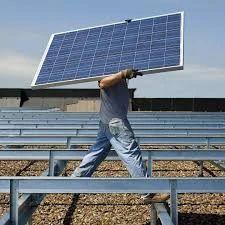Cost Analysis of 10kW Solar Inverter for Home Installation and Energy Efficiency
Understanding the Price of a 10 kW Solar Inverter
In recent years, the demand for renewable energy solutions has surged, particularly in response to the global movement towards sustainable living. Solar energy, being one of the most accessible forms of renewable energy, has seen significant advancements in technology and affordability. A crucial component of any solar energy system is the inverter, and specifically, the 10 kW solar inverter has gained popularity among residential and commercial users alike. This article will explore the price of a 10 kW solar inverter, factors influencing its cost, and its overall value in a solar energy system.
Overview of 10 kW Solar Inverters
A 10 kW solar inverter is designed to convert the direct current (DC) generated by solar panels into alternating current (AC), which can be used by household appliances or fed back into the electricity grid. This capacity is suitable for larger homes or small businesses, making it a valuable investment for those looking to harness solar power effectively.
Price Range
The price of a 10 kW solar inverter can vary significantly based on several factors, including brand, efficiency, technology (string inverter vs. micro inverter), and additional features such as monitoring capabilities. On average, consumers can expect to pay between $1,000 and $3,000 for a quality 10 kW inverter. High-efficiency models or those with advanced features might command higher prices, further emphasizing the importance of considering both quality and cost when selecting an inverter.
Factors Influencing Price
price of 10kw solar inverter

1. Brand Reputation Renowned brands often charge a premium for their products due to their established reliability and customer service. However, reliability is crucial in this market, so many consumers are willing to invest more in well-reviewed brands.
2. Inverter Type There are generally two types of inverters string inverters and microinverters. String inverters are typically less expensive and more common for residential installations, while microinverters, which provide greater flexibility and efficiency, tend to be pricier.
3. Efficiency Ratings Inverters with higher efficiency ratings (around 95% or above) may cost more upfront but can lead to better energy production and savings in the long run, making them a more worthwhile investment.
4. Features Additional features such as Wi-Fi connectivity for monitoring energy production and consumption can also affect the price. Inverters with built-in monitoring capabilities allow homeowners to track their system’s performance in real-time, adding to overall value.
Long-Term Value
While the initial price of a 10 kW solar inverter may seem considerable, it is essential to view this as part of a larger investment in solar technology. Over the lifespan of the solar system, which can be 25 years or more, homeowners can expect significant savings on electricity bills. Additionally, in many regions, government incentives and rebates can offset the upfront cost, making solar energy even more appealing.
In summary, a 10 kW solar inverter is a vital investment for anyone looking to maximize their solar energy system’s efficiency. While prices range significantly, considering factors such as brand, inverter type, efficiency, and features will help potential buyers make informed choices. The long-term financial and environmental benefits far outweigh the initial costs, paving the way for a sustainable future. Investing in solar technology today means preparing for a greener tomorrow.
-
String Solar Inverter: The High-Efficiency Solution for Smart Solar EnergyNewsJul.14,2025
-
Revolutionizing Rooftop Energy with the Power of the Micro Solar InverterNewsJul.14,2025
-
Power Independence with Smart Off Grid Solar Inverter SolutionsNewsJul.14,2025
-
On Grid Solar Inverter: Powering the Future with Smart Grid IntegrationNewsJul.14,2025
-
Monocrystalline Solar Panels: High-Efficiency Power for the Future of Clean EnergyNewsJul.14,2025
-
Bifacial Solar Panel: A Smarter Investment for Next-Generation Energy SystemsNewsJul.14,2025







